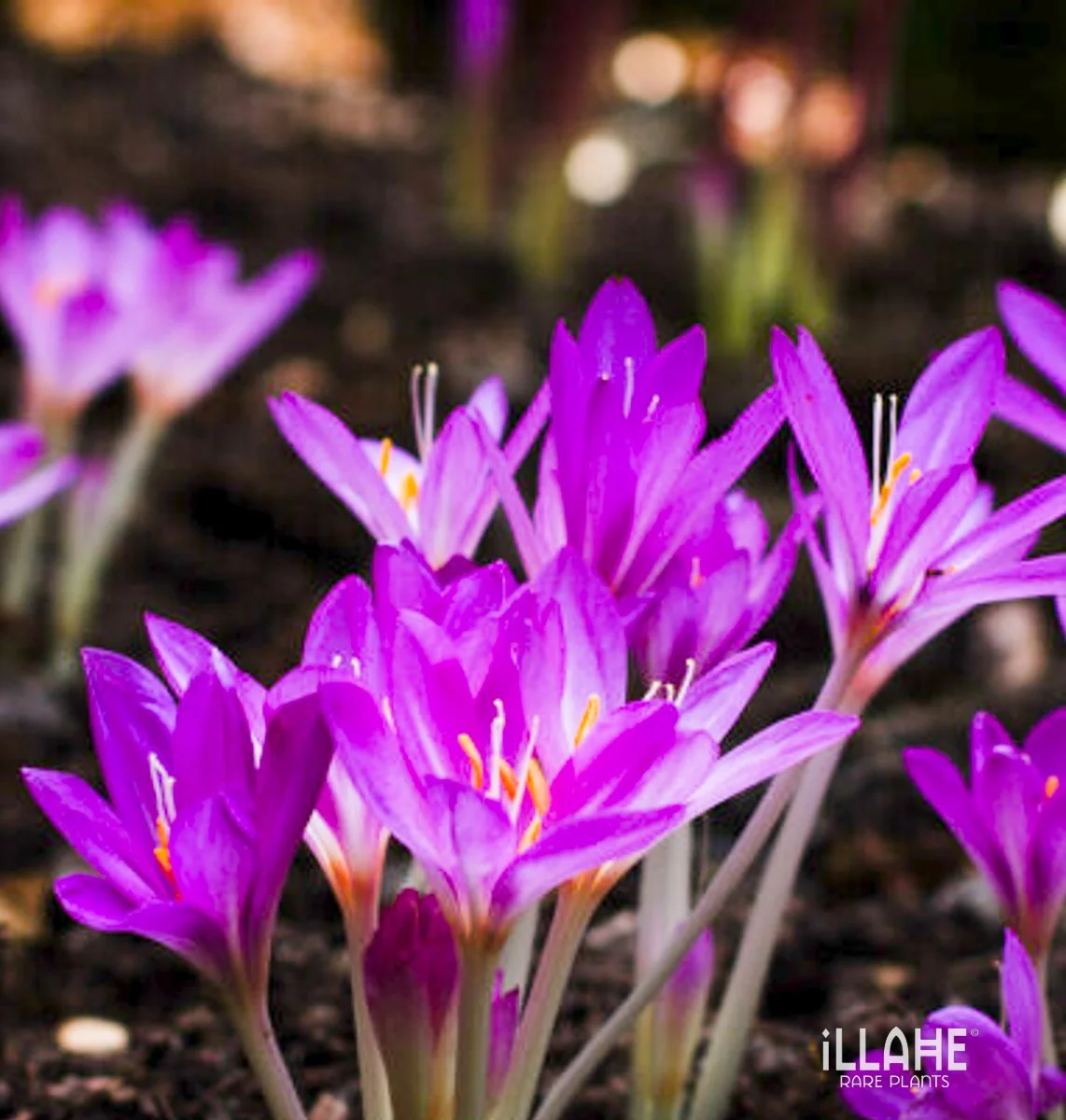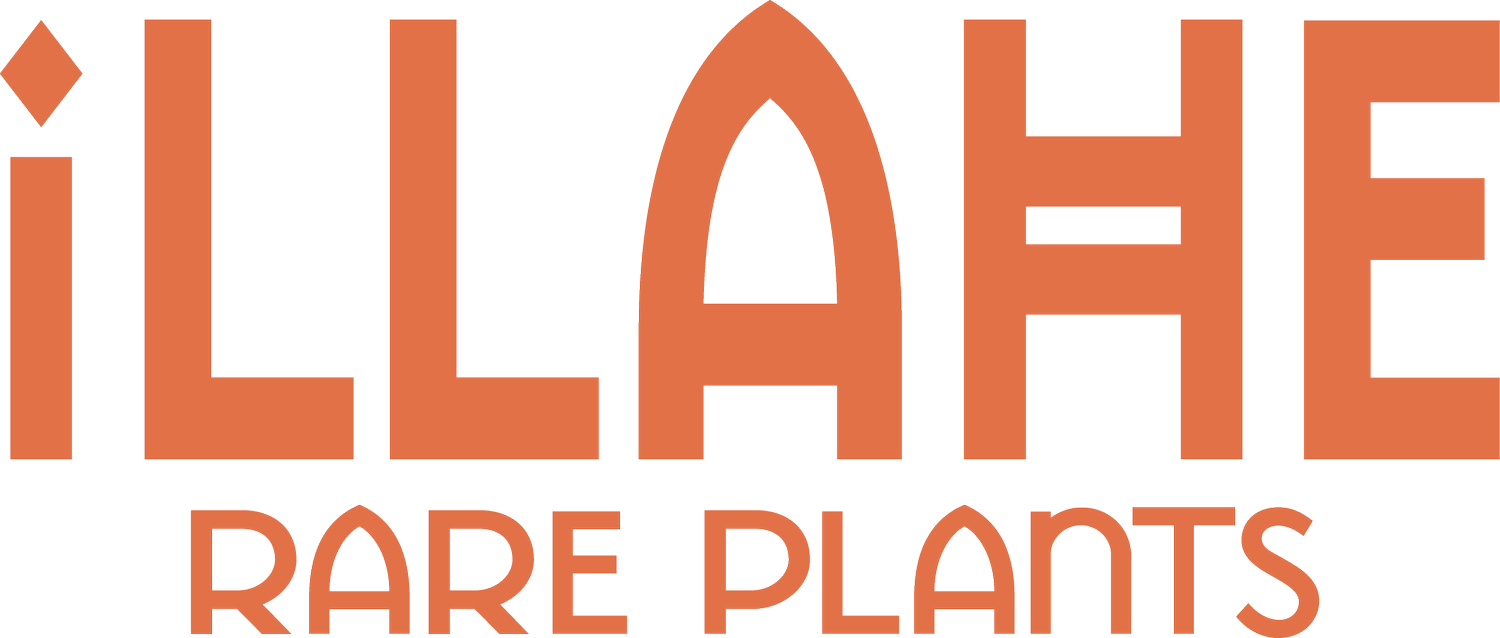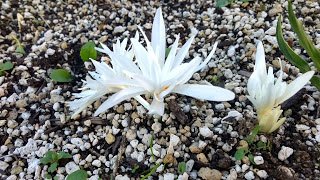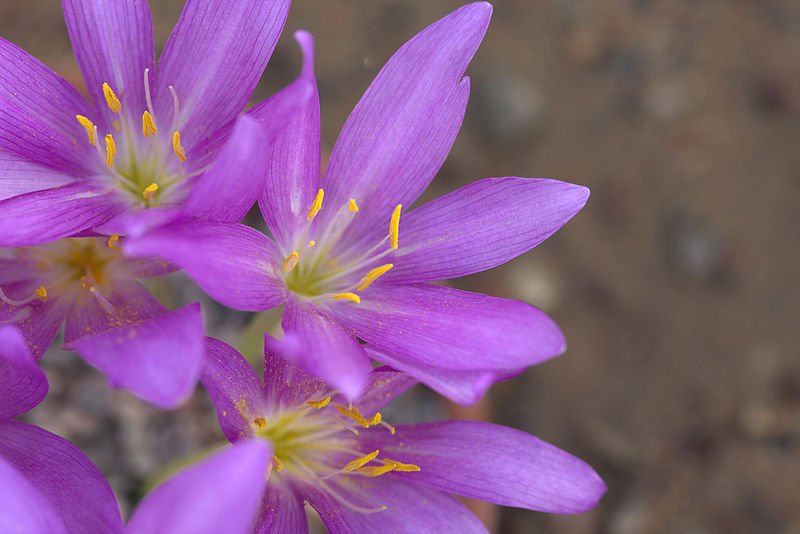
Colchicum atropurpureum Drake s Form
An old form, known for its sweet, honey and clove scent. Jan McGary’s excerpt from a Pacific Bulb Society forum seems to make a fitting catalog description:
This afternoon I was looking at the colchicums in the bulb frame and
noticed a sweet fragrance. It proved to emanate from a large-
flowered one that I received originally under the name "Colchicum atropurpureum
'Drake's Form'." "C. atropurpureum" is a name that appears in Stearn's old
monograph, but E. A. Bowles's discussion of it is both confused and
confusing; he seems to mean that the name has been variously
applied, and concludes that "there is no species to which it can be ascribed,"
although saying that it is close to C. turcicum -- an opinion repeated in
Christopher Brickell's entry for it in the AGS Encyclopaedia of
Alpines. I don't know which Drake found this form; perhaps it was the English
nurseryman Jack Drake. Very likely it should just be called Colchicum
'Drake's Form'.
Anyway, after noticing this naturally I went around sniffing colchicum
flowers, and found no other with this particular honey scent. A few
were slightly malodorous, and most had a faint, mildly pleasing scent that
reminds me of a good-quality non-perfumed milled white face soap. C.
speciosum hasn't opened here yet, but it is the parent of many garden
hybrids, so I'll await its fragrance to see if that is where
'Drake's Form' got it.
An old form, known for its sweet, honey and clove scent. Jan McGary’s excerpt from a Pacific Bulb Society forum seems to make a fitting catalog description:
This afternoon I was looking at the colchicums in the bulb frame and
noticed a sweet fragrance. It proved to emanate from a large-
flowered one that I received originally under the name "Colchicum atropurpureum
'Drake's Form'." "C. atropurpureum" is a name that appears in Stearn's old
monograph, but E. A. Bowles's discussion of it is both confused and
confusing; he seems to mean that the name has been variously
applied, and concludes that "there is no species to which it can be ascribed,"
although saying that it is close to C. turcicum -- an opinion repeated in
Christopher Brickell's entry for it in the AGS Encyclopaedia of
Alpines. I don't know which Drake found this form; perhaps it was the English
nurseryman Jack Drake. Very likely it should just be called Colchicum
'Drake's Form'.
Anyway, after noticing this naturally I went around sniffing colchicum
flowers, and found no other with this particular honey scent. A few
were slightly malodorous, and most had a faint, mildly pleasing scent that
reminds me of a good-quality non-perfumed milled white face soap. C.
speciosum hasn't opened here yet, but it is the parent of many garden
hybrids, so I'll await its fragrance to see if that is where
'Drake's Form' got it.








